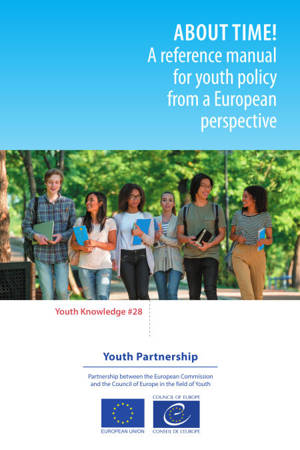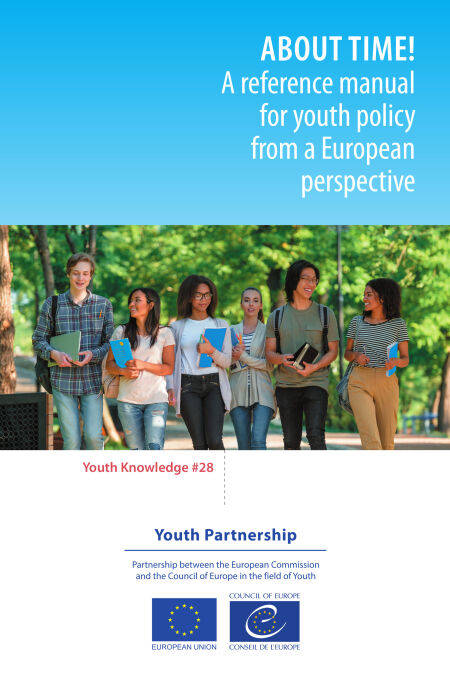
- Afhalen na 1 uur in een winkel met voorraad
- Gratis thuislevering in België vanaf € 30
- Ruim aanbod met 7 miljoen producten
- Afhalen na 1 uur in een winkel met voorraad
- Gratis thuislevering in België vanaf € 30
- Ruim aanbod met 7 miljoen producten
Zoeken
About time! A reference manual for youth policy from a European perspective E-BOOK
Howard Williamson, Max Fras, Zara Lavchyan
E-book | Engels
€ 18,99
+ 18 punten
Omschrijving
A reference tool for initiating youth policy and learning about the diversity of national and international governance and about the infrastructure available for youth policy, its implementation, review and evaluation
Today, we know much more about national and European youth policy, the role of research, participation of young people and monitoring and evaluation of youth policy than we did when the first Youth policy manual was published in 2009 by the EU–Council of Europe youth partnership. The concept of youth policy can be very narrowly or very broadly constructed. This volume positions youth policy in the context of public policy and reflects on the complex, cyclical nature of policy making, bringing together the results of knowledge gathering and debates central to the European agenda in the field over the last 15 years.
Thematically, the manual focuses very specifically on those areas of youth policy that have been formulated and developed through European consensus-building – participation, information, volunteering, social inclusion, access to rights, youth work, mobility and digitalisation. We hope that the five parts of the manual, from the conceptual to the practical, and through a range of examples and questions for reflection, will help you to explore, understand and engage with the youth policy framework in your context, from your own perspective, and will provide you with a sense of all the stages of youth policy making. Most importantly, the manual includes a wide range of standards, tools and resources developed by and for the benefit of youth policy makers, youth work practitioners, youth researchers and young people across Europe.
It is About Time! we strengthen the youth sector further to develop a new generation of positive and purposeful youth policies in Europe!
Today, we know much more about national and European youth policy, the role of research, participation of young people and monitoring and evaluation of youth policy than we did when the first Youth policy manual was published in 2009 by the EU–Council of Europe youth partnership. The concept of youth policy can be very narrowly or very broadly constructed. This volume positions youth policy in the context of public policy and reflects on the complex, cyclical nature of policy making, bringing together the results of knowledge gathering and debates central to the European agenda in the field over the last 15 years.
Thematically, the manual focuses very specifically on those areas of youth policy that have been formulated and developed through European consensus-building – participation, information, volunteering, social inclusion, access to rights, youth work, mobility and digitalisation. We hope that the five parts of the manual, from the conceptual to the practical, and through a range of examples and questions for reflection, will help you to explore, understand and engage with the youth policy framework in your context, from your own perspective, and will provide you with a sense of all the stages of youth policy making. Most importantly, the manual includes a wide range of standards, tools and resources developed by and for the benefit of youth policy makers, youth work practitioners, youth researchers and young people across Europe.
It is About Time! we strengthen the youth sector further to develop a new generation of positive and purposeful youth policies in Europe!
Specificaties
Betrokkenen
- Auteur(s):
- Uitgeverij:
Inhoud
- Taal:
- Engels
Eigenschappen
- Productcode (EAN):
- 9789287191601
- Verschijningsdatum:
- 1/09/2021
- Uitvoering:
- E-book
- Formaat:
- ePub

Alleen bij Standaard Boekhandel
+ 18 punten op je klantenkaart van Standaard Boekhandel
Beoordelingen
We publiceren alleen reviews die voldoen aan de voorwaarden voor reviews. Bekijk onze voorwaarden voor reviews.











